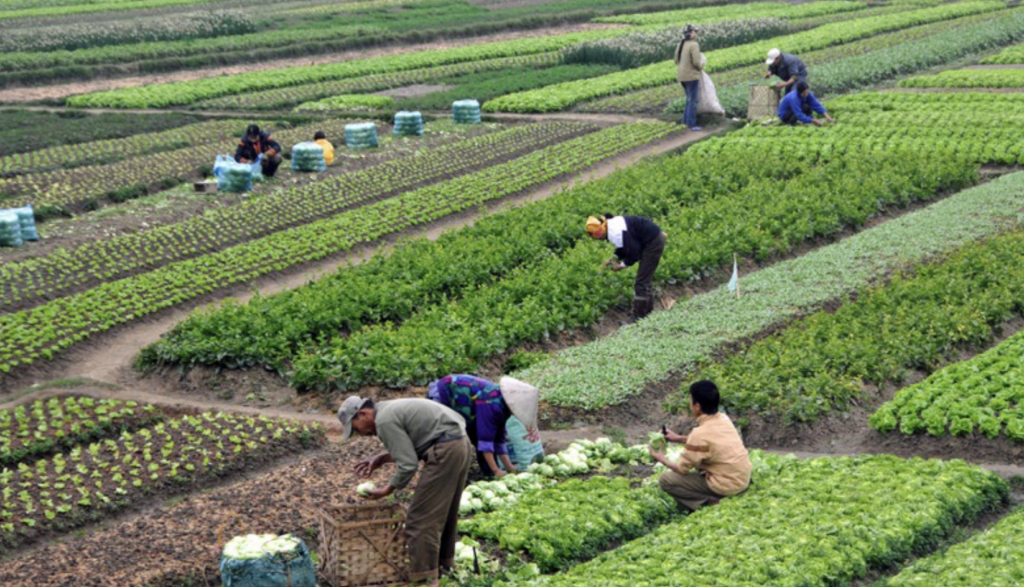By Bram Peters, Food Systems Programme Facilitator
The future is a mystery, full of uncertainties, risks and opportunities. Yet, humans and human systems have a remarkable ability to turn imagination into reality. In this landscape of uncertainty, foresight becomes an essential tool, helping us navigate what lies in the future. This is especially important when it comes to food systems transformation.
In this blog, I will endeavour to give you a glimpse at how foresight, awareness of the political nature of futures, and alternative scenarios can help us rethink and reshape our food systems for a more just and sustainable future.
Four Ways to Think About the Future
According to Muiderman et al. (2020), there are four main approaches to foresight:
- Assessing Probable (and Improbable) Futures
Example: The IPCC climate scenarios, which predict likely outcomes based on different climatic and environmental trends, and possible climate actions. - Contending with Multiple Plausible Futures
Example: Scenario matrices that explore what could happen in different situations under various combinations of uncertainties. - Imagining Diverse, Pluralistic Futures
Example: Visioning exercises where we picture a desired future, then work backwards (backcasting) to figure out how to get there. - Scrutinizing the Performative Power of Future Imaginaries
This approach examines how our collective visions of the future can actually shape reality.

Most foresight work focuses on the first three approaches. But in today’s world, shaped by pandemics, global conflicts, and rising political tensions, having the skills to apply the fourth approach can be considered to be more important than ever. A recent Synthesis Review of food system futures conducted by Foresight4Food identified that we can generally see various clusters of key food systems futures around ‘business as usual’, ‘global sustainability’,
‘local solutions’, ‘rising inequalities’, and ‘uncontrolled chaos’. However, it was also observed that none of these described scenarios portray very radically different food system futures.
The Power of Collective Imagination
Jasanoff and Kim, in their book Dreamscapes of Modernity (2015), introduce the idea of socio-technical imaginaries:
“Collectively imagined forms of social life and social order reflected in the design and fulfilment of nation-specific scientific and/or technological projects.”
In simpler terms, societies tell themselves stories about who they are, where they’ve been, and where they’re going. These stories—these imaginaries— can reshape history, redefine the present, and chart a course for the future. And often, they serve the interests of those in power.
The Future Is Political—and It’s Already Here
Why does this matter? Because the future isn’t just something that happens to us. It’s something that societies seek to actively shape, often through powerful narratives. Consider some current, concerning, imaginaries being promoted by powerful elites:
- Trump’s “Golden Dome” and the slogan “Make America Great Again”
- Elon Musk and other tech company elites’ visions of Artificial General Intelligence
Alternative imaginaries to counter power and transform societies toward a very different future also exist. Think about:
- The Degrowth Manifesto, as proposed by Kohei Saito in his book ‘Slow Down’
- Ministry of the Future, as narrated by Kim Stanley Robinson
Shaping Better Futures—Together
Foresight, when used critically, inclusively and deliberatively, has the power to shape more inclusive and constructive imaginaries. Jasanoff writes that these imaginaries “offers a glimpse into the realities of the known, the made, the remembered, and the desired worlds in which we live—and which we have the power to refashion through our creative, collective imaginings.”



In other words, we can—and should— together imagine alternative, inclusive, sustainable and transformative futures, making them tangible. The time to do this, at scale, is now. The Foresight4Food Global Workshop, taking place in Jordan from 15-19 June, will include an exercise on ‘Radical Food System Futures’. This will harness the collective intelligence of the foresight and food systems community, and enhance focus on imagining very different food systems than we see around us today.